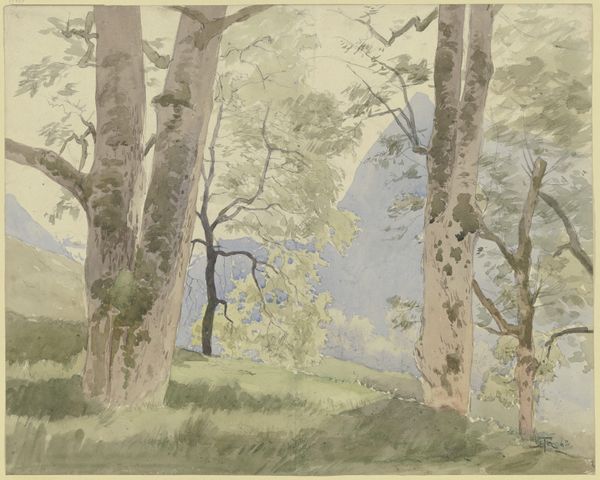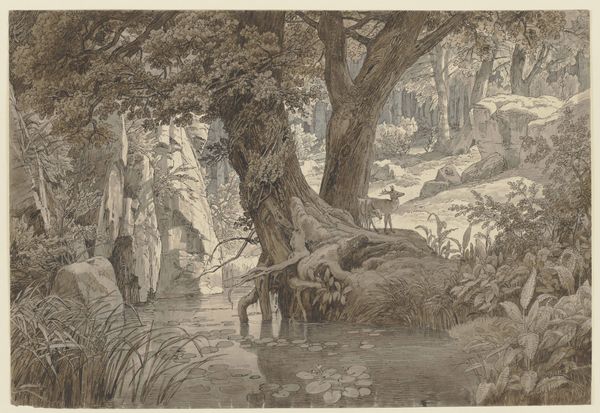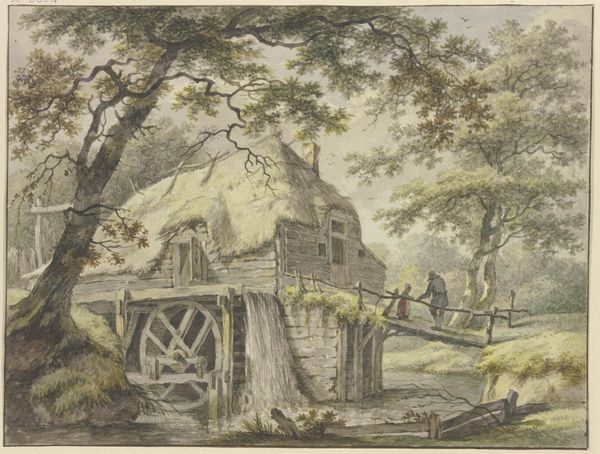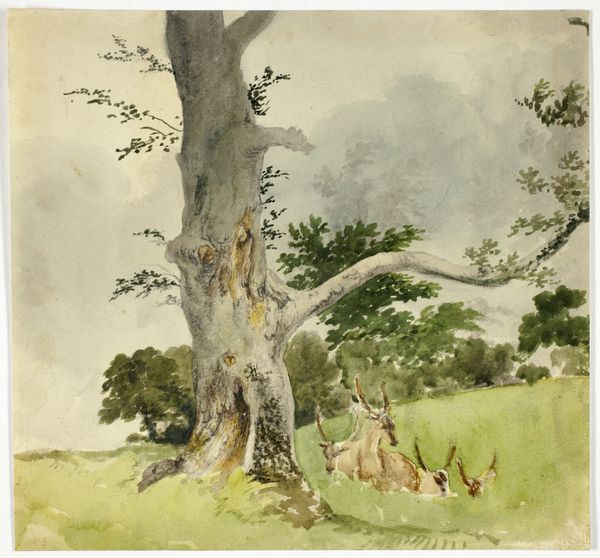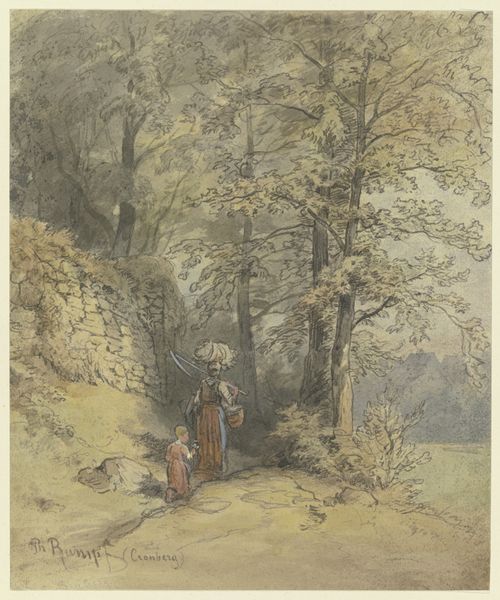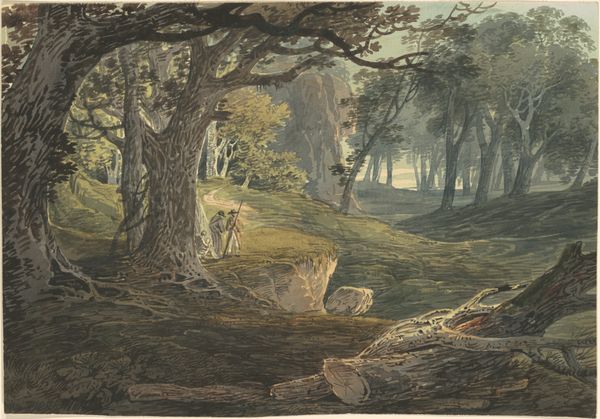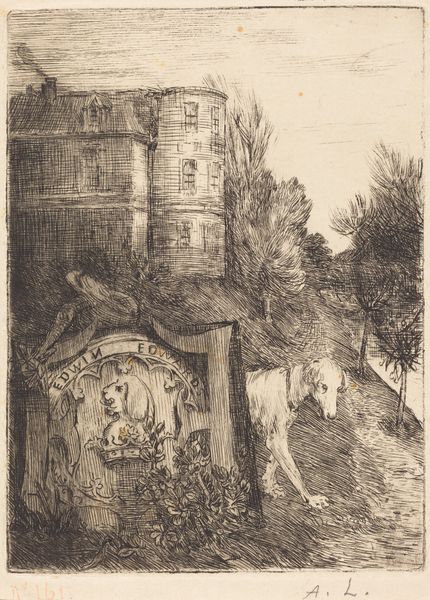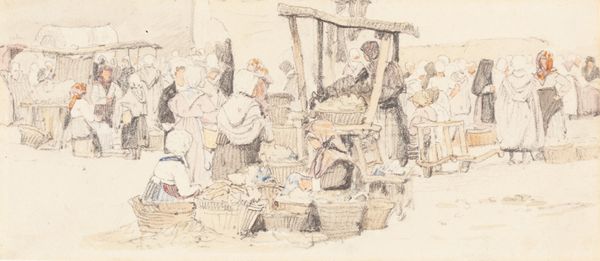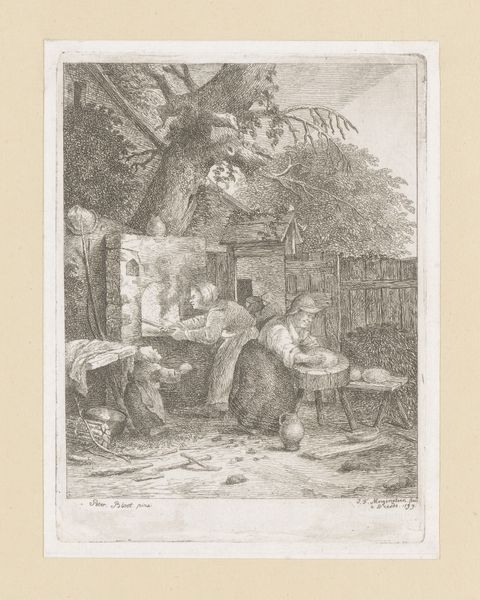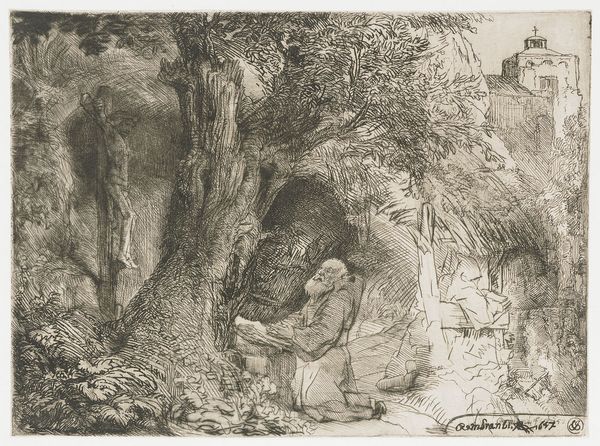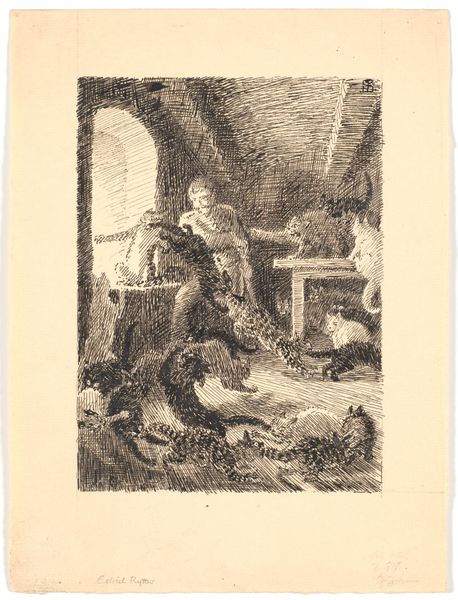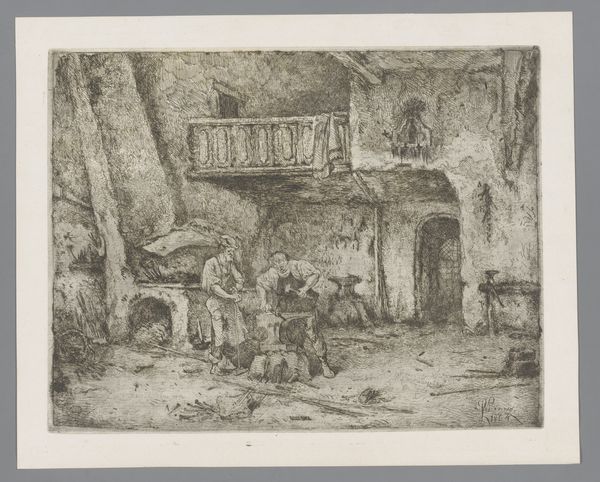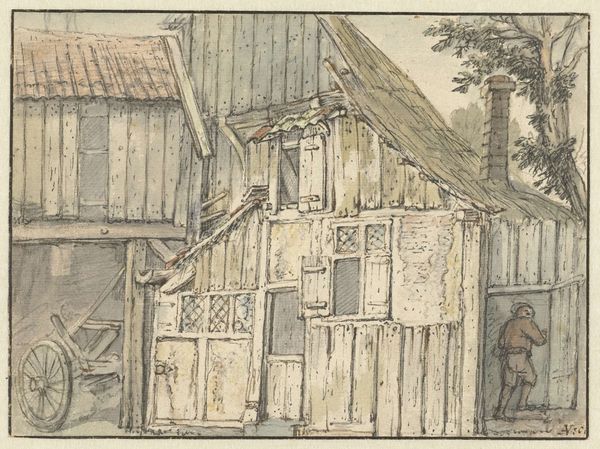
Zwei Araber vor einem Riesenbaum, der als Wohnung genutzt wird 23 - 1898
0:00
0:00
Copyright: Public Domain
Curator: Well, what an unusual scene. My first impression is dominated by that gigantic tree. Editor: Indeed. Here we have "Zwei Araber vor einem Riesenbaum, der als Wohnung genutzt wird," or "Two Arabs in front of a giant tree used as a dwelling." It's a drawing from 1898, currently held at the Städel Museum. The artist is Fritz Hauck. Curator: A dwelling indeed. What strikes me immediately is the sheer mass of the tree. It dominates the composition entirely. The artist uses watercolor and colored pencil on paper to convey texture, but everything seems secondary to its form. Editor: Absolutely. I think this piece speaks to the tradition of Orientalism within 19th-century European art. Notice how Hauck depicts the Arab figures in a genre painting style, perhaps perpetuating an image of the "exotic" and the "primitive". Curator: But does it though? While I concede to that context, what about the architectural detailing—the rendered doorway and tiled additions high up. These structures and details lead to the conclusion that someone *lived* in this tree. And consider the subjects. The way the subjects appear in conversation seems fairly unburdened of those art historical trappings. I see less exoticism and more everyday scene. Editor: The muted color palette and slightly hazy rendering adds a layer of romanticism. Hauck employs soft lines, contrasting with the rather imposing presence of the tree, and its peculiar structures that you've described. Perhaps evoking the allure and mystery that many Europeans at the time associated with the Middle East. The light is diffused, isn’t it? Very atmospheric. Curator: I see the interplay between natural form and human imposition here, both structural and social. And despite its visual lightness and "impressionistic" sensibility, Hauck seems committed to realistic textures, from the rendering of bark to the tiling and doorways affixed within the giant tree trunk. What that imposition means within larger structures of social understanding is another question. Editor: Indeed. It's a fascinating piece that highlights the artist's skill, sure, but it also demands we engage with a period steeped in a certain sociopolitical worldview, a fascination with the so-called "other." Curator: So, it's a reminder that a tree is never just a tree. Editor: Precisely. Art reflects and shapes our understanding of culture, and in that sense it shows how deeply perspective impacts our perceptions of reality.
Comments
No comments
Be the first to comment and join the conversation on the ultimate creative platform.
